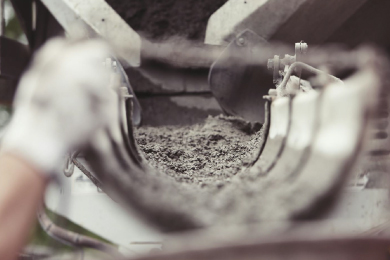It was welcome news for us at Green Building Design, and no doubt for many other small and medium enterprises (SMEs) too, when the Government announced six months of energy cost mitigation measures for businesses in the recent mini-budget.
However, it’s a bittersweet pill. Firstly, it was announced in September, but businesses won’t actually see any reductions on their bills until November. Secondly, for some SMEs in the early stages of growing their business, six months’ worth of protection may simply not be enough.
But there is another way businesses could – and should – be looking at this. Those six months of protection are air-cover that will enable many SMEs to grasp new opportunities to improve energy efficiency, reduce their future consumption and costs, and minimise the impact of their activities on the planet - all at the same time.
We call this the“Green Window” – and businesses need to look up and see the light!
What is the Green Window?
The Green Window is about using the next six months or so to plan, and start implementing, energy efficiency enhancements within your business, because there are opportunities now to adopt energy-efficient and sustainable approaches more readily and cost-effectively than ever before.
Here are just a few examples of what’s on offer:
Solar now pays out quicker
Solar panels are now not just more energy-efficient than ever before, producing some 25% more electricity than the panels that made up the majority of the market in the past, they also pay out quicker, thanks to the spiralling price of network electricity.
The residential solar energy market is already clearly showing this, with payback periods now looking more like five to seven years, rather than the previously typical twelve to fifteen – and that’s with capped wholesale prices. For businesses, where there is no wholesale price cap, and energy prices could therefore increase without limit, the payback period is likely to reduce even further.
Ultimately, this will mean recalculating the potential return on either adopting a solar power solution, or expanding the one you already have – and this is of course something we can offer expert advice on to SMEs.
Modelling now cuts costs and improves ROI
One of the issues with energy-efficient changes to buildings has often been the negative effect of the “green bling”contractor mentality – that is, combining multiple energy-saving devices and installations that look the part but end up working against each other, sending bills, carbon emissions, and installation costs in the wrong direction.
Thankfully, intelligent modelling of energy dynamics now means it’s possible to precisely calculate - and so optimise - the energy efficiency measures in any given building, through techniques such as thermal analysis, daylight and CFD (airflow) modelling, and façade performance analysis.
The choices that emerge from this process consider the relative advantages of different energy-efficient technologies, current and future costs, how systems interact and how they are used.
Air source heat pumps? Green roof? Blue roof? It could be one or all of these solutions, but the modelling process means you can be confident you’ll have opted for the combination that delivers maximum ROI.
As a first step in this process, we can carry out a building energy audit of your premises to highlight where the main issues are and where you could potentially make most savings.
The technology is now more effective than ever
Energy efficiency technologies have come on in leaps and bounds over the past 10 – 15years, and now perform far better (and more economically) than they used to.
Take an air source heat pump, for example. The latest models are up to 500% more efficient than gas boilers, and they last up to 20 years (whereas a gas boiler typically lasts up to only ten).
Consider air conditioning, too. Modern, ductless, mini-split systems, for example, typically consume 30% less energy than ducted systems, and solar, as we mentioned above, is around 25% more energy-efficient now than it has been in the past.
Grants and funding now available
Best of all, though, getting the most out of the Green Window needn’t mean funding your energy efficiency initiatives from scratch.
There are numerous Government energy efficiency grants and schemes available for SMEs, including those specifically targeted at reducing the upfront costs of investing in energy-efficient equipment, and of integrating green heating technologies such as heat pumps into their premises.(You can see the full list here).
Six months and counting: what’s your next move?
Windows open and close, and this one is no exception, so to get where you need to be before it slams shut and your energy costs once again start to rocket, you need to act now.
Get in touch today to find out how we can help your business turn the heat down on costs (even when you need turn it up at the thermostat).





.png)




